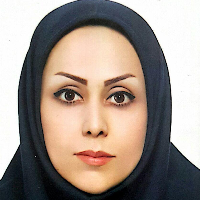Prioritization of sub-basins using multi-criteria decision making methods (Case study: Gamasiab catchment, Kermanshah)
Water is a treasure to be passed on to future generations, and it is now clear to the world that human well-being and industrial and agricultural development are all at stake unless the optimal use of water resources as well as integrated environmental planning and management become a key element of plans and investments. Water resources management is a set of various management measures, which is done to optimize the use of water resources and reduce economic, social and environmental damage. Sustainability assessment by indicators is useful for planning, management and educational purposes. Indicators should be easy to use, comprehensive and universal. They must also be accessible, understandable and valuable, revealing and comprehensive. Due to the importance of sustainable development, quantifying this concept of sustainable water resources management indicators is done by considering economic and social ecosystem considerations. The use of multi-criteria decision-making methods in water-related issues has been used by many researchers.
The purpose of this study is to investigate the stability of Gamasiab basin. The study area, Gamasiab catchment is one of the main sub-basins of Karkheh basin. Figure (1) shows the geographical location of the Gamasiab catchment. Figure (2) shows the algorithm of research steps. The studied indicators are as follows: Percentage of normal rainfall index (PNPI): Its basic concept is the ratio of actual rainfall to its normal amount over a period of time, expressed as a percentage and can be calculated on a scale (weekly, monthly, seasonal and annual). Equation (1) shows how to calculate this index. A standard precipitation index (SPI) was provided to monitor and determine droughts. This index is calculated in time scales of 48,24,18,12,9,6,6,3,1 months and one year (Equations 2 and 3). Surface water storage index (SWSI): The purpose of this index is to consider hydrological and meteorological characteristics as a single index (Equations 4 and 5). Standard runoff index (SRI): This index is obtained according to Equation (6). Available water index (WAI) This index includes surface water resources, groundwater and its difference from the needs of all household sectors of the agricultural industry (Equation 7). WEAP model: This model is flexible due to the data structure in a range of highly decomposed to highly aggregated modes. The input to the reservoir can be given to the model both through the hydrological model and as a time series . Integrated management of water resources and consumption was simulated in the WEAP model and its output was used in EXCEL software to calculate ASI, ESI, out-of-reach water supply reliability and fairness in water allocation. Figure (3) shows a schematic of the resources and uses of the Gamasiab catchment area. Reliability Index (REI) Reliability or reliability is the probability with which water allocated to the consumer meets its needs (Equations 8 and 9). Reversibility index (Res) The probability that a system will return to normal after a failure is called reversibility (Equation 10). Vulnerability index (Vul) The most widely used definition is the ratio of the total deficits to the number of steps in which the deficit occurred divided by the total need (Equation 11). Sustainability Index (SI) Sustainability Index Summarizes system performance metrics in an index to facilitate comparison and decision making between different water resources management and planning options (Equation 12). Environmental Indicators: The Agricultural Sustainability Index (ASI) is defined as the sum of the nominal ratio of agricultural demand in the time series. Environmental sustainability (ESI) is defined as the ratio of supply to demand in an environmental measure over time. The Wilcox Index The Wilcox diagram is based on the electrical conductivity (EC) values of water-soluble solutes in different classes. Schuler Index The Schuler Index divides water into six groups: good, acceptable, suitable, bad, drinkable in an emergency, and non-potable. Social indicators: Drinking water supply reliability index in the form of reliability of drinking water transmission links in which the amount of supply to demand is equal to 1. Justice in water allocation index (CV) This index shows the coefficient of variation of supply to demand ratio in all agricultural demands. Economic indicators: Profit to cost ratio (B / C) This index is obtained by dividing the profit on existing costs. The total value of production is obtained by subtracting the total costs of crop production from the gross value (the product of product yield per unit area multiplied by the unit price). Shannon entropy method was used to weight the indices, which can be calculated using relations 13 to 18. TOPSIS, CP and SAW multi-criteria decision-making methods were used to rank the indicators (relationships 19 to 32). Ranking options using different decision-making methods are different. Therefore, the Bordeaux counting method has been used for the final selection of the superior option. In this method, instead of using the evaluation values of each option, only their comparative rank, which is determined by using different methods, is used to minimize uncertainty in them (Equations 33 and 34).
In this study, multi-criteria decision making (MCDM) methods were used to rank the sub-basins of Songor, Sahneh, Kangavar, Harsin-Biston and intermediate in terms of economic, social, environmental and water resources criteria. The results of weighting the indicators by Shannon entropy method showed that the reliability index of drinking supply has the highest weight with 0.29. After that, out of reach water indices and WAI index with weights of 0.188 and 0.186, respectively, have the highest weights. The lowest weights among the indices are related to PNPI index with a value of 0.000053, followed by SWSI index with a value of 0.00018 and then the lowest weight is related to Schuler diagram index with a value of 0.00082. Finally, due to the ranking differences of the above methods, the Bordeaux counting group decision-making method was used for the final ranking. The results of this study using multi-criteria decision making methods including SAW, TOPSIS and CP decision making models showed that the most sustainable sub-basin in terms of economic, social, environmental and water resources for Gamasiab catchment in Kermanshah province is Harsin-Biston catchment (due to the usefulness of the calculated indicators),. The intermediate and Songhar sub-basins, respectively, have the ranks of 2 and 3 in terms of stability. The weakest sub-basins are Sahneh and Kangavar sub-basins in terms of criteria.
-
Monitoring water level changes in Hashilan wetland using remote sensing
Sahel Shirmohammadi, Maryam Hafez Parast Mavaddat *, Ali Bafkar
Journal of Advanced Technologies in Water Efficiency, -
Runoff simulation with HEC-HMS model and sensitivity analysis of flood hydrograph trending parameters using differential evolution algorithm (case study: Merck River catchment)
Kamran Azizi, Mavedat *
Iranian Journal of Soil and Water Research, -
Assessment of the Impacts of Climate Change on Soybean Yield and Water Requirement Using Crop Models
A. Dehghan Moroozeh, B. Farhadi Bansouleh*, M. Ghobadi
Journal of Agricultural Science and Technology, May 2024 -
Technical Evaluation of Drip Irrigation Systems Implemented in Salas Babajani City of Kermanshah Province
Houshang Ghamarnia *, Habib Abasi, Bansouleh
Journal of Water and Irrigation Management,




